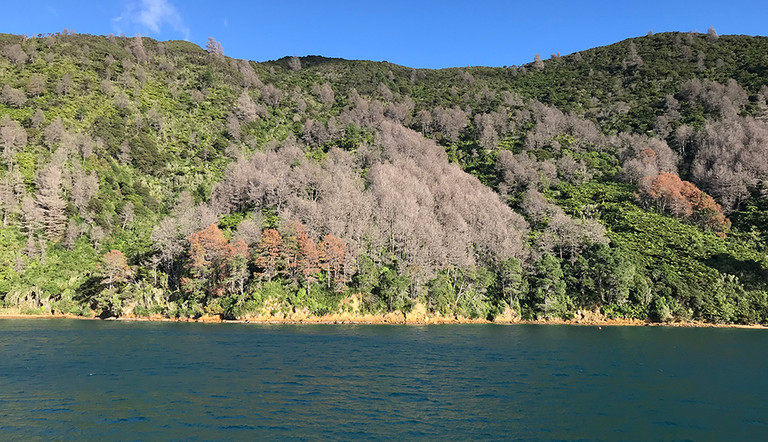
ADAMA helps with Marlborough Sounds make-over

The already stunning scenery of the Marlborough Sounds is getting a touch-up, with some help from Nelson-headquartered crop protection company ADAMA New Zealand.
ADAMA is donating the chemistry being used in the Marlborough Sounds Restoration Trust’s flagship project; the eradication of wilding pines. The Trust’s Chair Dr. John Hellstrom says ADAMA are generous supporters and have backed that up with much-appreciated technical support.
Restoring the Sounds since 2003
The Marlborough Sounds Restoration Trust was founded in 2003 by a group of passionate volunteers with the goal of restoring the Sounds to its natural environment and “Protecting Paradise”. Its aspirations were lofty, but already, John says, the Trust has made noticeable inroads.
John says wilding pines had been replacing natives as the dominant species in the area. This created fire risks, and negatively impacted catchment water flows, and the natural contours and aesthetics of the iconic landscape.
The Trust has worked closely with local landowners, donors and the community. John says it was not difficult to get active support to “reclaim the skyline”. This despite many people initially thinking it was not possible.
The project began in Queen Charlotte Sound and the impact was quickly visible. “Everyone coming from Picton on the ferry could see the pines turning brown.”
Metsulfuron used to kill wilding pines
John says the use of Metsulfuron Herbicide (Metsulfuron), which is drilled into the trees, has been a big improvement on traditional control methods such as ring barking and glyphosate, both of which took much longer and did not achieve the same degree of decomposition of the trees.
“Metsulfuron works in 2-3 weeks, on the branches and pine needles if conditions are right. Then, in 2 or 3 years, all that’s left are the dead trunks.”
The Trust uses only skilled and professional people to do the work. Each tree is treated individually, with workers aided by aerial photos and GPS.
Local connections
David MacGibbon, ADAMA NZ’s CEO, says his company’s involvement came initially through a local connection. “Andrew Macalister, who is a trustee, contacted us and asked about Metsulfuron. We got talking and it went from there. At the time we were also working with the Abel Tasman Birdsong Trust, so there was a synergy there as well.”
It turned out that the specific formulation of ADAMA’s Metsulfuron was also especially well-suited to the Trust’s needs. Widely-used as a brush weed herbicide, Metsulfuron is typically applied by aerial or ground spray neither of which would have been cost-effective in this instance.
David says the Trust and their contracting team has perfected their method of application to the individual pines in what is enormously challenging terrain. However, landscapes worth having, take time.
In for the long term
David says everyone involved is aware that the project is going to be intergenerational. “Once you see what’s been achieved, you can also appreciate how much more there is to accomplish.”
The Sounds are fortunate in that they have a rainfall which makes regeneration of the native canopy relatively quick. That, combined with the efforts of the Trust and its supporters, including ADAMA, have already contributed to making this what John describes as one of New Zealand’s most successful landscape restoration projects to date.